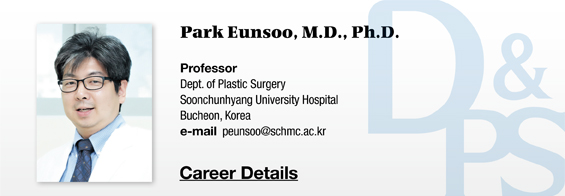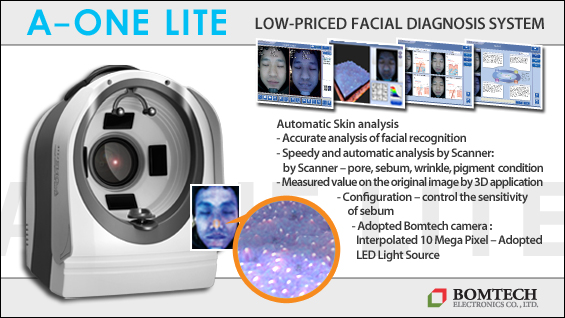▶ Previous Artlcle : #14-2. Understanding and Application of Epidermal Growth Factors
The article in the previous issue provided an overview of cell therapies. In this article, we will take a look at clinical application assumed to be the most widely used cell therapy, cultured human keratinocytes. We will focus on, in particular, allogeneic keratinocyte sheet (trade name: Kaloderm) harvested and cultured from neonatal foreskin.
The treatment using allogeneic keratinocyte sheets may be an unfamiliar concept to some. However, culture of human keratinocytes began in 1975 in the US and has been applied in burn and skin ulcer treatments for three decades with good safety profiles. This method does not use permanently proliferating stem cells for transplantation but keratinocytes that provide proteins necessary for wound healing and eventual re-epithelization.
[Advertisement] A-One LITE(Facial Diagnosys System) – Manufacturer: BOMTECH(www.bomtech.net)
Overseas products include Cryopreserved Skin Graft (Life Cell Tec·USA), OrCel (ORTEC, INC.·USA), etc. In Korea, Tego Science for the first time developed Holoderm and Kaloderm, allogeneic keratinocyte sheets. Kaloderm, in particular, is allogeneic keratinocyte therapy approved by MFDS of Korea in 2003. Clinical studies proved its efficacy in drastic reduction of healing period and reduction of a wound which led to marketing authorization in 2005. Reexamination of Kaloderm was approved in 2011 showing its reliable efficacy and safety. It is particularly effective in burn wounds and diabetic foot ulcer, adding an indication for diabetic foot ulcer in 2010. It is currently the most widely used cell therapy product in various skin defects.
Allogeneic keratinocytes are not autologous cells and the transplanted keratinocytes are not permanently engrafted. However, while they survive in the wound bed, they have the effect of promoting the healing process. This mechanism is known to be driven by growth factors, cytokines and extracellular matrix that originate from keratinocytes. Grafted keratinocytes provide an environment for re-epithelialization to take place by the action of wound-surrounding tissues and skin appendages. It also induces mild inflammatory response that is known to promote wound healing and form basement membrane components that help epidermal covering of the wound.
Especially, cultured allogeneic dermal sheets provide a protective film against evaporative water loss and infection or physical irritation. Its differentiated effect is in adequate and timely provision of proteins needed throughout the healing process. The wound healing process consists of 1) inflammatory response, 2) cell proliferation, and 3) realignment of cells and tissues. Allogeneic keratinocytes release large amounts of cytokines and extracellular matrix, etc. to promote proliferation and migration of intact skin stem cells from healthy surrounding tissues and skin appendages. Moreover, it stimulates fibroblasts to induce synthesis of extracellular matrix such as collagen. It also releases collagenases such as MMP-1, MMP-2, MMP-9, etc. to control oversynthesis of collagen and inhibits hypertrophic scar formation.
Such diverse actions of keratinocytes promote re-epithelialization and wound healing as well as wound reduction. Allogeneic keratinocyte therapy does not require a special intervention and simple application of the commercial sheet on the wound is sufficient. This simplicity is a big advantage over autologous cell therapy.

Table 1. Proteins and growth factors released from allogeneic keratinocytes therapy.

Kaloderm in the sheet form/ Application.
-To be continued-





















